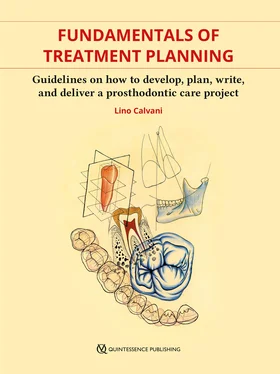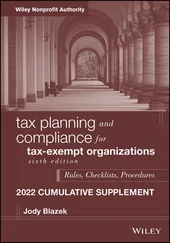3. Biologic: presence of antigen-antibody complexes, hydrolytic enzymes, plasmatic quinines, a small amount of activated complement, etc. 38
4. Infectious: presence or invasion of viruses, bacterial microorganisms, bacterial endo- and exotoxins, protozoa, fungi, parasites, macro-organisms, etc. 39- 42
Other factors that affect the inflammatory reaction process are age, nutritional deficiencies, severe metabolic diseases, immune capabilities, and the amount of hormones in the body such as cortisone, hydrocortisone, corticosteroids, etc. 35, 43- 45
Inflammation processes can be peracute, acute, subacute or chronic. They usually require a medical response and can last for a long period of time. 35, 46
Aulus Cornelius Celsus, the Roman encyclopedist (25BC to 50AD) in his book De Medicina, was the first person to highlight the four local signs of inflammation:
1. Rubor (redness).
2. Tumor (swelling).
3. Calor (heat).
4. Dolor (pain).
There is also a fifth macroscopic sign of inflammation, which is functio laesa (loss or disturbance of function). This was identified by Galen, who later added it to the four signs identified by Celsus. Actually, the attribution to Galen is disputed, and has variously been attributed to Thomas Sydenham and Rudolf Virchow. Nevertheless, whoever was responsible for identifying it, function laesa is a clinical reality, 47, 48in light of which the original four signs of inflammation can be amended to the following five:
1. Redness (rubor): acute hyperemia of the inflamed tissue.
2. Swelling (tumor): edema of fluids and inflammatory cells in the extravascular inflamed area.
3. Heat (calor): local higher temperature due to hyperemia and the vascular dilation local reaction effect.
4. Pain (dolor): due to acute inflammation chemical mediators such as some prostaglandins as well as bradykinins. It can also be due to the swollen and deformed tissue.
5. Loss of function (functio laesa): the macroscopic reduction or lack of functionality of the inflamed area that may be due to pain and the stiffness that results from swelling.
According to general pathology doctrines, the clinical expressions of inflammation consist of:
1. Circulatory alterations: the permeability of vessels, local plasmatic exudation, and edema.
2. Corpuscolated exudation: blood cells, connective local and mobile cells.
3. Regressive phenomena: anatomical and functional alterations, including necrosis.
4. Regenerative phenomena: substitution damaged cells, new original reparatory tissue, or various types of scar tissue.
Inflammation can have beneficial and detrimental effects, both locally and systemically. It is an extremely important sign in dental medicine and is therefore touched on later in the book (see Chapters 7, 8, and 10).
Xerostomia and dry mouth
Xerostomia is both a symptom and a sign. It is both a subjective sensation of dry mouth as well as the evident reduction or lack of saliva. It affects almost 20% of elderly patients. Xerostomia is one of the most significant problems in the oral cavity because the lack of saliva may dramatically increase the frequency of caries, the rate of infections due to candida, the onset of dysphagia (difficulty swallowing), and the onset of dysarthria (difficulty articulating phonemes and words). 49- 51It is potentially a serious problem that may cause the onset of other clinical problems. 49, 52, 63
There are several different causes of xerostomia:
1. Iatrogenic causes such as medications, chemotherapy, local radiation therapy, chronic graft-versus-host disease (GVHD) due to the transplantation of allogenic stem cells. 52, 53, 99
2. Salivary gland diseases such as Sjogren’s syndrome, diabetes mellitus, hepatitis C, sarcoidosis, HIV, biliary cirrhosis, cystic fibrosis. 54- 58
3. Other causes such as inadequate intake of food, hemochromatosis, amyloidosis, salivary gland agenesis, Wegener’s disease, triple-A syndrome. 49, 59, 60
4. Drugs: This is a major cause of xerostomia. As drugs are often responsible for xerostomia, clinicians should ensure that they know exactly what medications patients are taking and which of these could possibly cause dry mouth. 61- 63This is one of the reasons why it is crucial to collect comprehensive medical and dental drug data during the first diagnostic phase.
To date, there are 25 categories of medications representing some 133 generic drug names that have xerostomia as a side effect, as follows:
1. Anorexiant.
2. Antiacne.
3. Antianxiety.
4. Antiarthritic.
5. Anticholinergic/antispasmodic.
6. Anticonvulsant.
7. Antidepressant.
8. Antidiarrheal.
9. Antihistamine.
10. Antihypertensive.
11. Anti-inflammatory/analgesic.
12. Antinauseant.
13. Antiparkinsonian.
14. Antipsychotic.
15. Antisecretory.
16. Antispasmodic.
17. Antiviral.
18. Bronchodilator.
19. CNS stimulant.
20. Decongestant.
21. Diuretic.
22. Migraine.
23. Muscle relaxant.
24. Narcolepsy, narcotic, analgesic.
25. Ophthalmic sedative.
Composite drug therapies can cause xerostomia. It is common for patients to take several drugs simultaneously for various problems, and their interaction may exacerbate dry mouth. Therefore, during the initial diagnostic phase, it is important that we scrutinize the patient’s answers to the questionnaires and investigate a bit deeper in our interview with the patient to ensure that we are aware of all the drugs the patient is taking. We also need to have a sound knowledge of their effects, side effects, and interaction with each other to properly diagnose and treat our patients and avoid future unexpected surprises or possible misunderstandings. 63
Dysgeusia and taste impairment
This important symptom is often underestimated and especially affects elderly patients. Taste, or gustatory perception, is a natural warning system that developed through evolution so that, apart from tasting when food or drink is good, humans are able to detect when it is spoiled and may endanger their health and life. This includes the ability to detect substances to which we may be allergic. Taste receptors are located on the tongue as well as on the roof, sides, and back of the mouth, on the epiglottis, and in the throat. 32, 64, 65
Dysgeusia is a condition in which a foul, salty, rancid or metallic taste sensation appears and remains in the mouth. Sometimes, patients report that this symptom started with the delivery of a prosthetic device or some other metal object in their mouths. Patients may attempt to place the responsibility for the symptom on the prosthodontist/s who planned and delivered the restoration. We need to investigate the cause of the dysgeusia carefully because sometimes it is caused by something other than the restoration, in which case we need to explain this in a gentle and kind way to the patient. The U.S. Department of Health and Human Services – National Institutes of Health reports that in the USA some 200,000 people visit a doctor each year for problems with their chemical senses, which includes taste and smell. This significant number of patients, which in fact may be just the tip of the iceberg, means that many people experience problems with these two senses. It is therefore usually too simplistic to relate the symptom of dysgeusia to a purely prosthodontic cause. Furthermore, taste and smell are closely related, and it is sometimes confusing in certain conditions to tell whether a patient has a taste or a smell disorder. 66- 69
Taste as a risk factor
Taste disorders may create serious health problems as they can be a risk factor for stroke, diabetes, heart disease, and other conditions where a careful diet must be followed. Impaired taste may cause patients to dramatically limit their food intake so that they experience massive weight loss, with the teeth having nothing to do with it. 70, 71This situation may also cause depression. This is important to know and remember in the initial diagnostic phase.
Читать дальше












